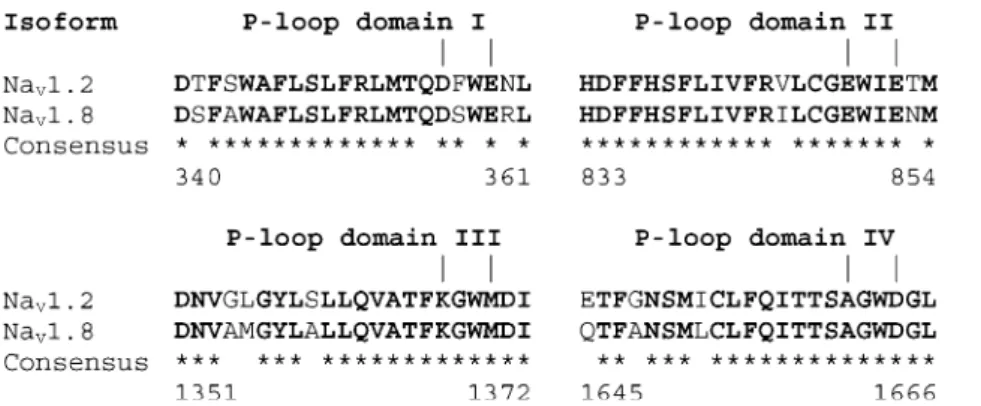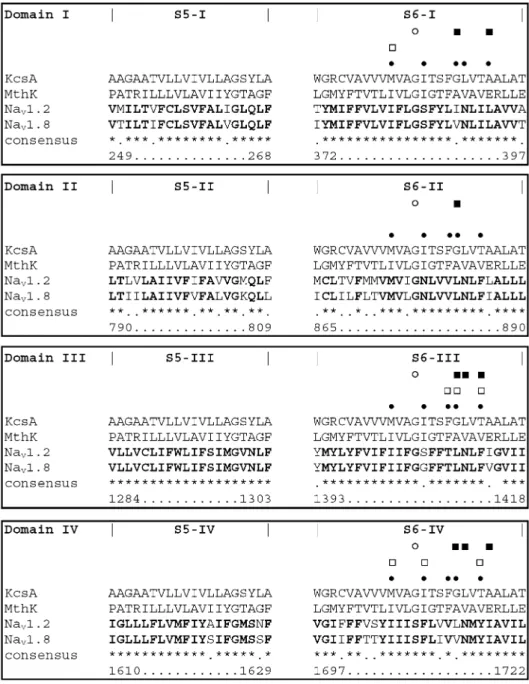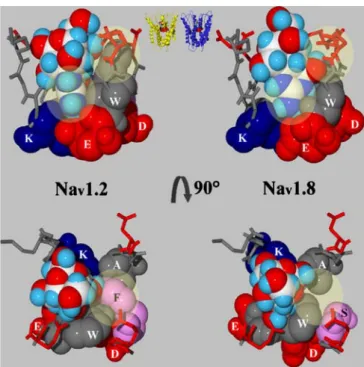Modeling the pore structure of voltage-gated sodium channels in closed, open, and fast-inactivated conformation reveals details of site 1 toxin and local anesthetic binding
Texte intégral
Figure



Documents relatifs
- We have doped sodium B alumina with Euz+ ions and studied the isomer shift, hfs, and temperature dependence of the Debye-Waller factor, using Mossbauer spectroscopy of the
In addition we also reported drug-induced use-dependent modifications of current peak and current tail, that have previously been proposed to result from (i) accumulation
Here we present a study in which electrophysiology and a Markovian multi-state modelling of the voltage-gated sodium channel were used to measure the susceptibility of the
Hypoxic Condi- tions Promote Rhythmic Contractile Oscillations Mediated by Voltage-Gated Sodium Channels Acti- vation in
We demonstrate with functional studies using the patch clamp technique that the sodium currents observed in the cancerous H23, H460 and Calu-1 cells are due to
This orientation would thus mimic the P1-leucine side chain of the covalent bortezomib inhibitor co-crystallized with the human proteasome molecule or of the C-terminal benzylic
When tracking the conformational rearrangements of the voltage sensor experimentally, one usually measures a gating charge transferred across the membrane (see
We used 3794 variants in the Genome Aggregation Database (gnomAD) (Karczewski et al., 2019) as variants with inferred neutral effects (see Table S2) during training of